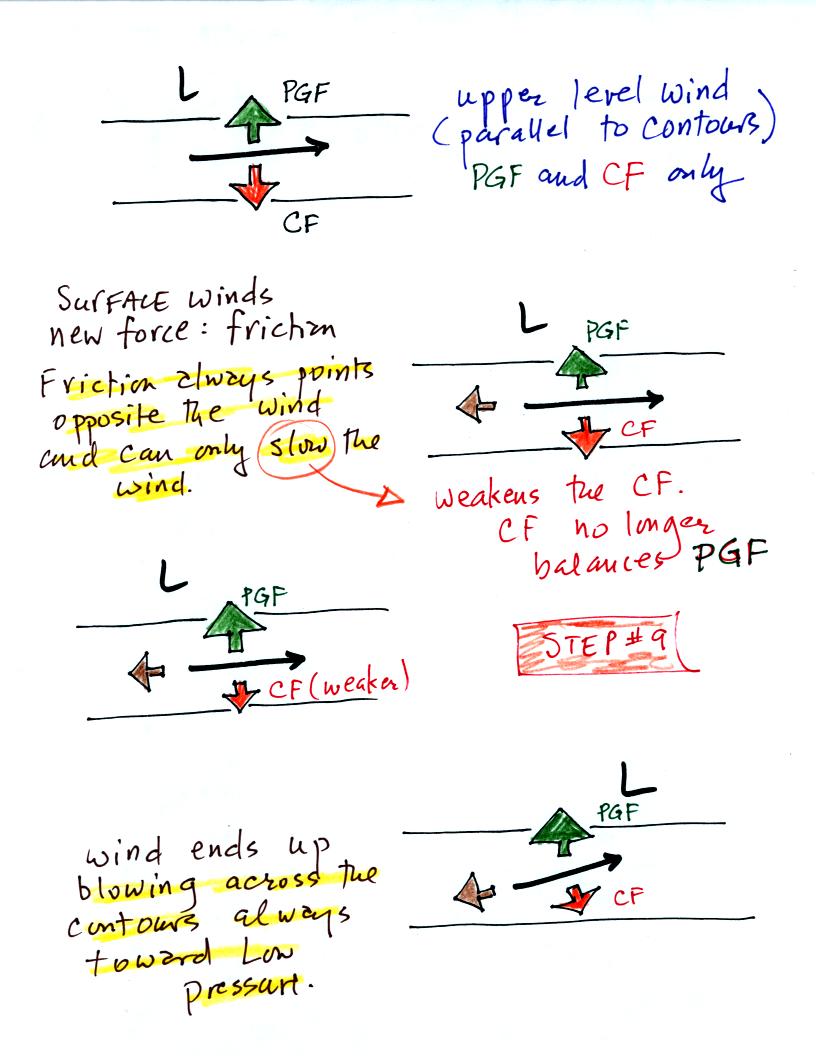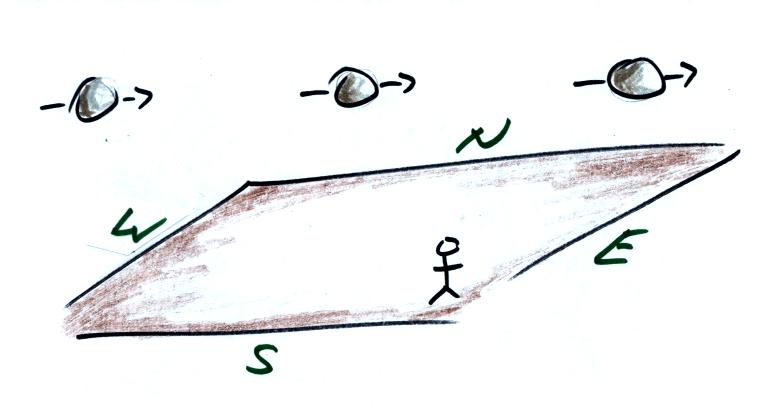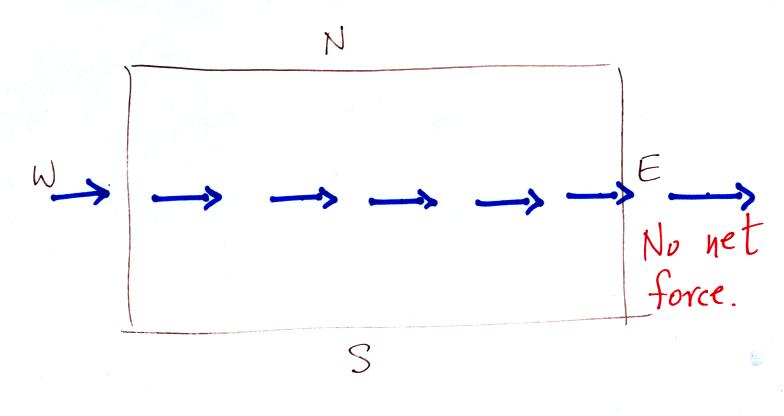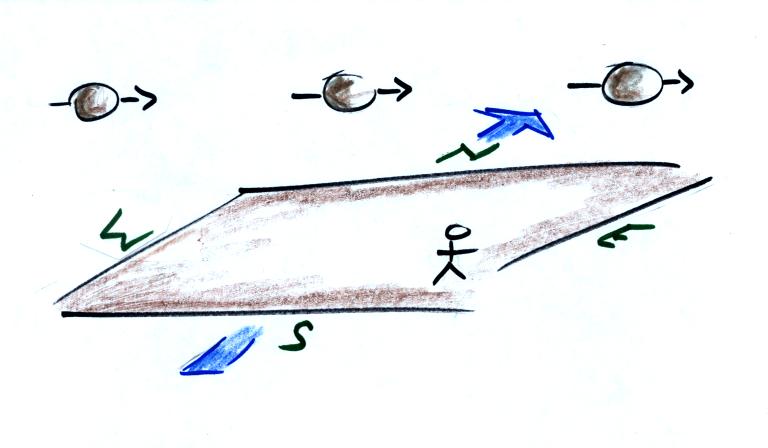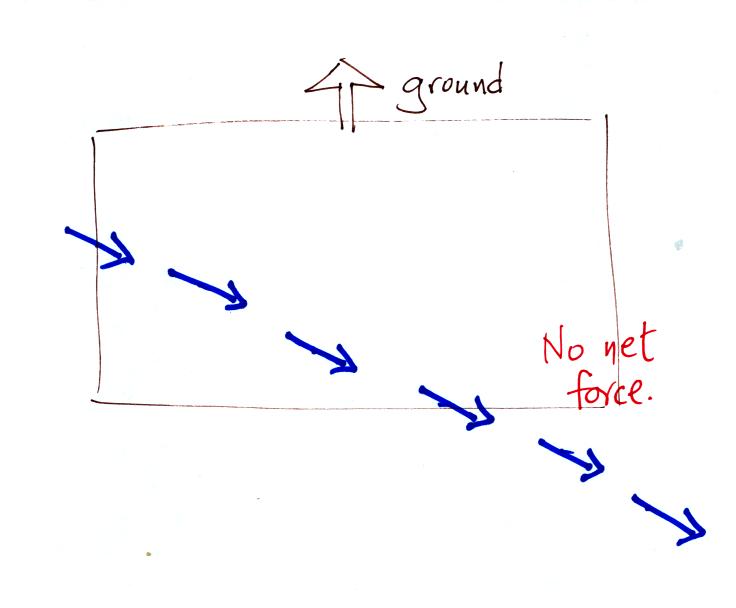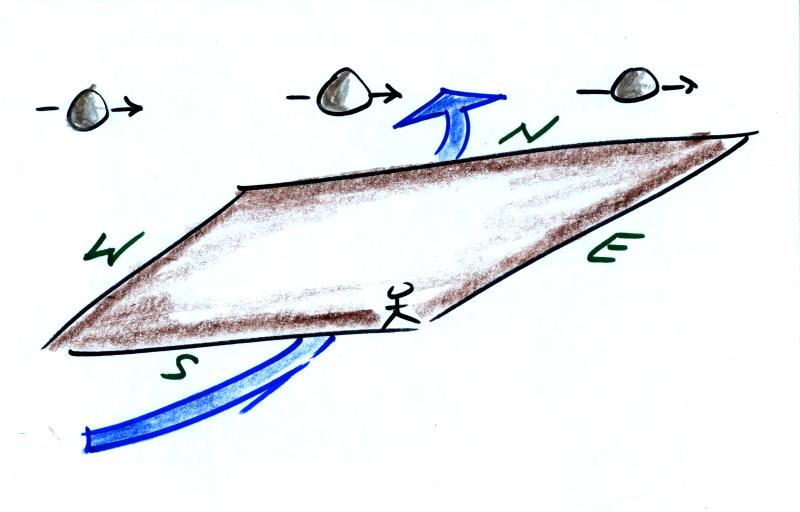
Now the ground is moving and
also spinning.
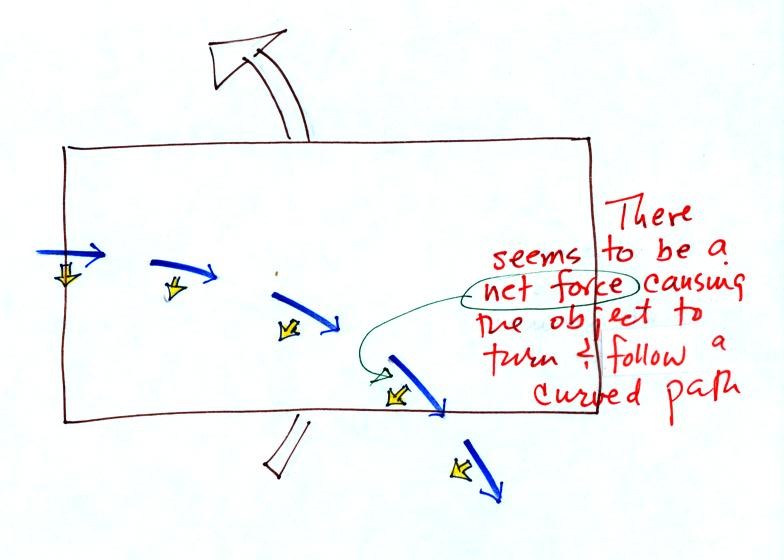
The path of the object plotted
on the ground appears to be
curved. That's because the ground is spinning, but let's just
ignore that for the time being. In this case you'd conclude that
there was a net force
perpendicular and to the right of the moving object. This net
force would be needed to explain the curved path that the object
appears to be
following.
At most locations on the earth the ground IS rotating. This
is
most easily seen at the poles.
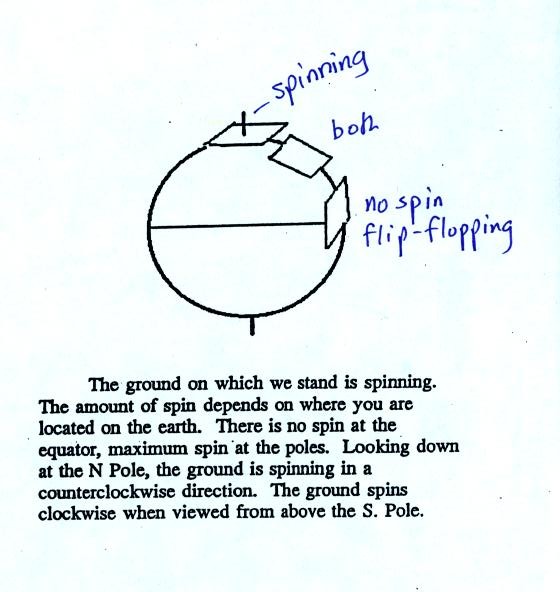
Imagine a piece of paper glued to
the top of a globe.
As the
globe spins the piece of paper will rotate. A piece of paper
glued to the globe at the equator won't spin, it will flip over.
At points in between the paper would spin and flip, the motion gets
complicated.
The easiest thing for us to do is to ignore or forget about the
fact that the
ground on
which we are standing is rotating. We do still need to account
for the curved paths that moving objects will take when they
move relative to the earth's surface. That is what the Coriolis
force does.
And that's the reason for another 1S1P
Bonus Assignment. This was a demonstration that proved that
the ground we're standing on (at most
locations on earth) is spinning. Here's a photograph of a
Foucault Pendulum at the Pantheon
in Paris.
It seemed appropriate at this point to look at a
common misconception involving the Coriolis force. You
might
already
have
heard
that
water
spins
in
a
different
direction
when
it
drains from a sink or a toilet bowl in the southern hemisphere
than it does in the northern hemisphere. You might also have
heard that this is due to the Coriolis force or the Coriolis
effect.
The Coriolis force does
cause winds to spin in opposite directions around high and low pressure
centers in the northern and southern hemisphere. The
PGF starts the air moving (in toward low, out and
away from high pressure) then the Coriolis force bends the wind to the
right (N. hemisphere) or to the left (S. hemisphere).
Here's what you end up with in the case of low pressure (you'll find
these figures on p. 130 in the photocopied ClassNotes):
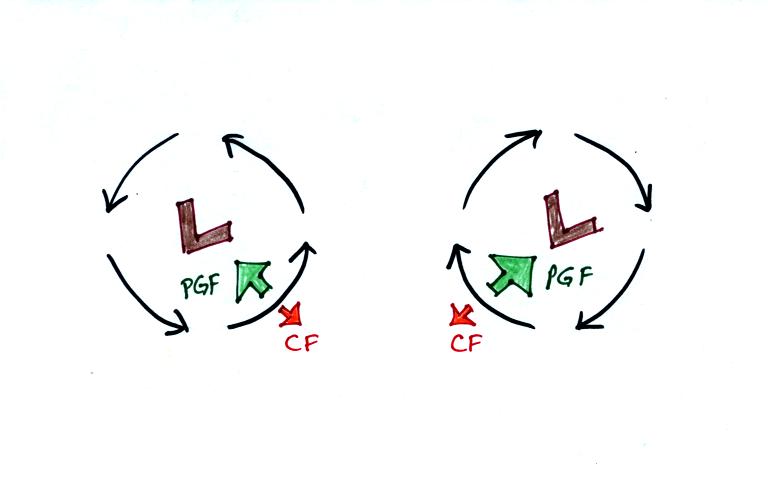
Air starts to move inward toward
low pressure. Then
the
Coriolis force causes it to turn to the right or left depending on
which hemisphere you're in. You should be able to say which of
the pictures above is the northern hemisphere and which is the southern
hemisphere picture.
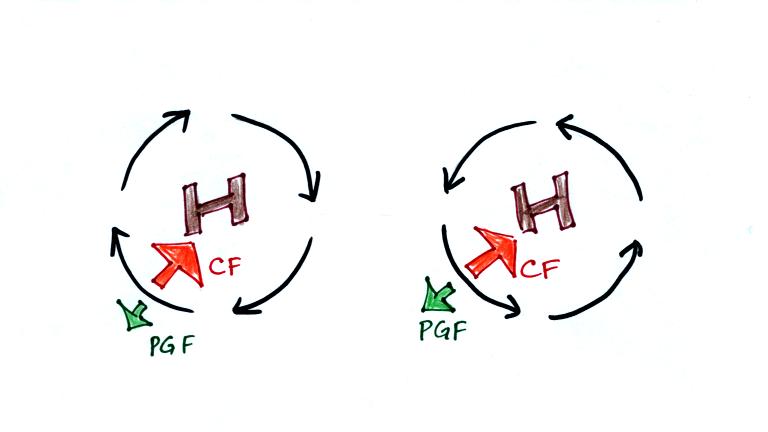
The same kind of idea applies to
high
pressure except that the air starts moving outward. The Coriolis
force then turns it to the right or left.
There are situations where the PGF is much stronger
than
the
CF and the CF can be ignored.
A
tornado
is
an
example.
Winds
can
blow
around
Low
pressure
because the PGF points inward.
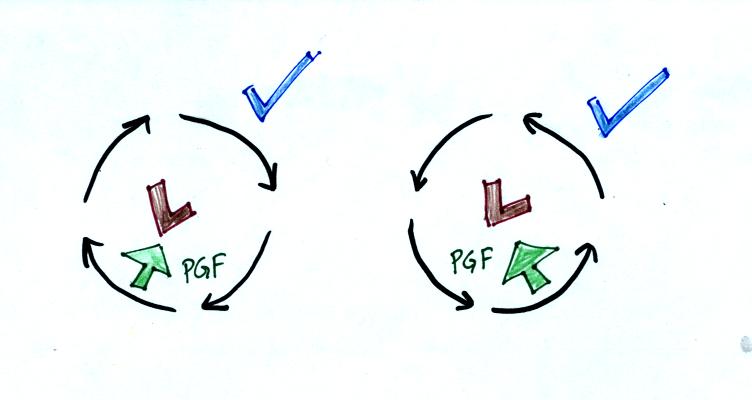
The wind can
spin in either direction in either
hemisphere.
Without the CF winds can't spin around High
pressure because
there is nothing to provide the needed inward force.
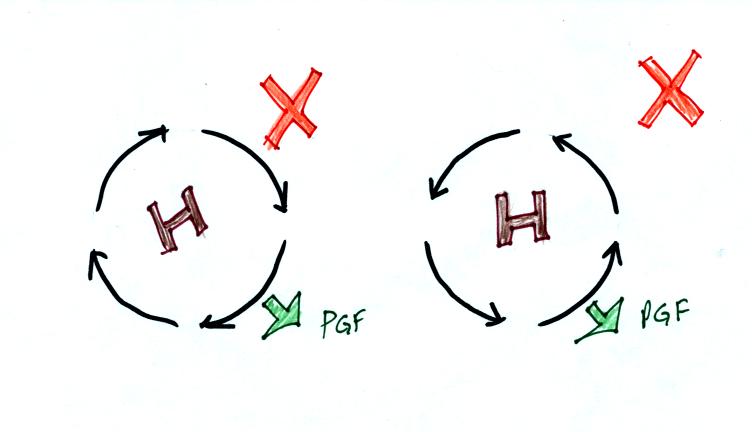
What about water draining from
sinks, buckets, toilets etc.

There's just an inward pointing
PGF, no
CF. Water can spin in either direction in either
hemisphere. What causes the inward pointing PGF? The water
at the end of the spinning water is a little deeper than in the
middle. Since pressure depends on weight, the pressure at the
outer edge of the spinning water is higher than in the center.
Water draining from a sink or toilet can spin in
either direction. It doesn't matter where you're located.
We watched a short video segment
that
seemed to show
otherwise. In the video a young man living at the Equator in
Kenya was demonstrating the Coriolis effect to
tourists. He showed water draining from a bucket and spinning in
opposite directions depending on whether he was north or south of the
equator. The water seemed to drain without spinning at all right
at the equator.
Don't believe everything you see on video. The
gentleman in the video was just very good at getting the draining water
to spin one direction or another as he moved on opposite sides of the
equator. Probably the most difficult part would be to get the
water draining without spinning, which is what he was able to do when
standing right on the equator.
But this something we should probably checkout for ourselves, so here
is one of my favorite
optional assignments of the semester.
